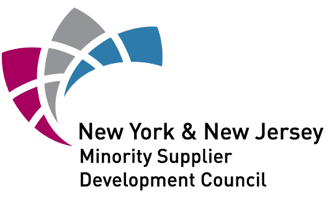This post contains affiliate links. If you use these links to buy something, we may earn a commission.
Accessibility isn’t just a kindness, it’s the law. The 1990 Americans with Disabilities Act (ADA) was established to allow disabled people equal access to goods and services, websites included. However, the benefits of ADA compliance go beyond avoiding legal issues.
People with disabilities, such as sight or hearing loss, aren’t any less valuable as customers, and if websites expecting them to make a purchase aren’t accessible, they’ll simply take their business elsewhere. Research shows that companies without accessible sites are losing $6.9 billion per year to competitors whose sites are accessible1.
Here are some of our tips for keeping your website ADA-compliant, and why it matters for your site and brand.

What Makes a Website ADA Compliant?
There are a lot of factors that go into making a site that’s truly usable by everyone, so many so in fact that the government doesn’t have specific standards for website compliance. Site owners have a good deal of flexibility in ensuring their sites are non-discriminatory and effectively communicate with people with disabilities.
That said, a good approach to start with (and one the government itself adheres to) is the Web Content Accessibility Guidelines (WCAG 2.0)2. This independently created standard breaks compliance into 4 easy to understand descriptions of what a site’s content should be:
- Perceivable
All content, be it text, images, or videos, should be easily understood by all users. This means creating content that’s easy to see and hear and providing alternative methods of engaging with content that don’t take away from the original meaning. - Operable
Your site’s content and overall layout should be arranged in a way that users can freely access and find content, with support for input modalities beyond the standard keyboard and mouse. Content should also be free of visuals that may cause seizures or other physical reactions. - Understandable
All content should be presented clearly and predictably. Your site should have legible, understandable text and input assistance to help users avoid and fix mistakes when using the site (e.g. filling out a form). - Robust
All accessibility measures and accommodations should be implemented with both current user tools supported and future ones kept in mind.
How Compliance Helps Both Visitors and Your Website
ADA Compliant Websites Reach More People
ADA compliance naturally increases your website’s reach by making it possible for more users to easily navigate it. According to the CDC, 6.2% of people in the United States deal with hearing loss, and another 5.5% are affected by vision impairment3. Ignoring such a large part of the population means missing out on a huge group of potential customers.
Inclusive Sites Offer a Better User Experience
Keeping compliance in mind allows any user, regardless of disabilities, to navigate and engage with your website and brand. Adding alt tags on images and closed captioning to videos or making your site easily navigable with a keyboard or assistive device ensures that more users can understand and enjoy all your site has to offer. Remember, no matter how great the content is, it’s next to useless if a visitor can’t access it.
Compliance and Search Engine Optimization Overlap
Fortunately, many key compliance concerns, such as alt tags, content organization, and properly filled out meta data, also fall in line with SEO best practices. These optimizations not only improve accessibility, but also provide search engines with more information about what’s on your website. Additionally, improved website accessibility often leads to better user engagement and reduced bounce rates, both of which boost a website’s search engine rankings.
ADA Compliance Enhances Your Brand Reputation
From a brand perspective, having a fully compliant website is a great look. When website visitors, disabled or not, see the effort you put into an accessible user experience, it sends a message that your business cares. This can help enhance your reputation, and may make customers more likely to support your business knowing that you prioritize accessibility and inclusivity, especially if their specific needs are being respected. For example, a 2019 survey by Click-Away Pound found that 86% of consumers with access would be willing spend more money with a company that provides an accessible online experience4.
Time to Get Compliant
Accessibility should be treated the same way you handle any website optimization. Always be on the lookout for usability issues and address them as soon as they become apparent, either on your own or through an accessibility plugin (we use accessiBe for our website). And if you need a hand finding where to start improving, you can always reach out to our web team about scanning your site.
Whether it’s for user experience or SEO optimization, an ADA-compliant website is always going to be a better performing website, so there’s no better time than now to make your site a more accessible place for everyone.
References
- https://cdn2.hubspot.net/hubfs/153358/Nucleus-The%20Internet%20is%20unavailable.pdf
- https://www.w3.org/WAI/standards-guidelines/wcag/glance/
- https://www.cdc.gov/disability-and-health/articles-documents/disability-impacts-all-of-us-infographic.html
- https://www.clickawaypound.com/downloads/cap19final0502.pdf




